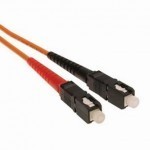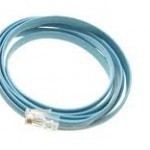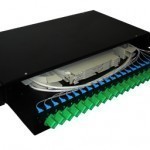Cat 5, short for Category 5, is the current accepted industry standard for network and telephone wiring. Cat 5 is an unshielded twisted pair type cable exclusively designed for high signal integrity. The cable consists of four pairs of 24-guage twisted copper pairs terminating in an RJ-45 jack. If a wire is certified as Category 5 and not just twisted pair wire, then it will have "Cat 5" printed on the shielding. The actual Cat 5 standard describes specific electrical properties of the wire, but Cat 5 is most widely Read More
WLAN (Wireless Local Area Network)
A WLAN is a sort of Local Area Network (LAN) that implements high frequency radio waves instead of wires to communicate and transmit data. It is a supple data communication method put into practice as an expansion to or as a substitute for, a typical wired LAN. An Access Point joins wired and wireless networks collectively and facilitates the transmission of data between wireless consumers and the wired network. Implementing several access points enhances overall system capability and scope. Wireless consumers can wander between different access points without disconnecting, like Read More
Ethernet Cable
This Ethernet cable can be used to connect a network interface card (NIC) to an Ethernet switch or hub. They transmit data using the Ethernet protocol. Ethernet cables have RJ-45 jacks on both ends, each with 8 pins (They look similar to telephone jacks, which use 4 pins or 6 pins). Equipment using an Ethernet cable is referred to as wired. The most popular Ethernet cable in current use, Category 5 or CAT5, supports both traditional and Fast Ethernet. The Category 5e (CAT5e) cable supports Gigabit Ethernet. This cable is Read More
Cisco Cable
Cisco uses a proprietary cable pinout for their serial console cables. Note: Pinout or pin-out is a term used in electronics to describe how an electrical cable is wired, or the function of each wire (pin) in a connector. Given below are the pinout details for a Cisco cable. 9-pin Cisco Cable Cable Pinout Signal DB9F RJ45 Receive Data 2 3 Transmit Data 3 6 Data Terminal Ready 4 7 Ground 5 4 Ground 5 5 Data Set Ready 6 2 Request to Send 7 8 Clear to Send 8 Read More
RG-11
Coaxial cables are necessary for rooftop antennas and dish antennas in order to provide crystal-clear sound and audio input. RG-11 bands typically have 75-ohm wires made of copper. Polyethylene dielectric makes sure that there is minimal loss of picture and sound while the antenna receives audio or video feeds. Most users of the RG-11 have reported high-quality resolution of the images transferred by these cables. RG-11 Specifications Type RG-11 RG-11A Impedance Z0(Ω) 75 75 Dielectric Solid Polyethylene Solid Polyethylene Time Delay (ns/ft) 1.54 1.54 Propagation Velocity (% of c) 65.9 Read More
568B
EIA/TIA 568B is a standard for the pin arrangements of RJ-45 connectors on Unshielded Twisted Pair (UTP) wire. The 568B standard was developed by AT&T under the name 258A. 568B Color Codes Pin (Jack) Pin (Plug) Color Pair 1 8 White/Orange 2 – Tip 2 7 Orange 2 – Ring 3 6 White/Green 3 – Tip 4 5 Blue 1 – Ring 5 4 White/Blue 1 – Tip 6 3 Green 3 – Ring 7 2 White Brown 4 – Tip 8 1 Brown 4 – Ring Pin numbers are Read More
Subscriber Connectors (SCs)

The Subscriber Connector (SC) is a fiber optic connector with a push-pull latching mechanism that provides quick insertion and removal while ensuring a positive connection. The SC is also available in a duplex configuration. It has a benefit in keyed duplex capability to support send/receive channels. This connector is commonly used for most modern network applications. The SC is a snap-in connector that is extensively used in single-mode systems for its remarkable efficiency. Subscriber Connectors are inexpensive, trouble-free, and robust. They give precise positioning via their ceramic ferrules. The square Read More
What is a Rollover Cable?

A rollover cable is a network cable that connects a computer terminal to a network router’s console port. It is also referred to as a Cisco console cable and is normally flat and light blue so as to distinguish it from other network cable types. The pin-outs on one end of the cable are reversed from the opposite end, which is how the cable derived its name. Rollover cables are also known as Yost cables or Yost Serial Device Wiring Standard connectors. How to Identify a Rollover Cable A rollover Read More
Ethernet at the Physical Layer
Ethernet is the most popular Local Area Network architecture that was jointly developed by Digital Equipment Corporation, Intel Corporation and Xerox Corporation. It consists of certain specifications and standards as well as hardware devices and components. Ethernet provides services corresponding to physical layer and data link layer of the OSI reference model. Each Ethernet physical layer protocol has a three part name that summarizes its characteristics. The components specified in the naming convention correspond to LAN speed, signaling method, and physical media type. The following table summarizes the differences between Read More
Fiber Optic Patch Panel

Fiber optic patch panel, also known as the fiber distribution panel, is used mainly in fiber optic cable management. It helps network technicians in minimizing the clutter of wires when setting up fiber optic cables. It terminates the fiber optic cable while providing access to the cable’s individual fibers for cross connection. They are also called the termination units and they are used to secure the splice units, and connectors. The fiber optic patch panels can accommodate connector panels, connectors, patch cords, associated trunk cables, and usually come with cable Read More


Share on: